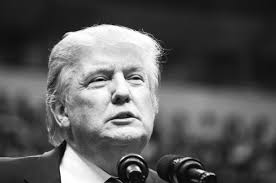Content from the Brookings Institution India Center is now archived. After seven years of an impactful partnership, as of September 11, 2020, Brookings India is now the Centre for Social and Economic Progress, an independent public policy institution based in India.
While continuing to advocate India’s traditional positions, New Delhi will need a Plan B for a more transactional America. This piece originally appeared in NDTV.
The US capital is a strange place these days. The District of Columbia’s coffee shops are running a brisk business, attending to a steady stream of ex-Obama administration officials and patient federal government employees awaiting policy direction from on high. Many members of the Republican policy firmament appear alienated, some bitterly so. Eyeballs are glued to cable news and (especially) to Twitter, curious about where Donald Trump will next train its gunsights. Meanwhile, the White House appears riven by infighting, with considerable speculation as to who might be the administration’s first fall guy. Hidden monsters lurk everywhere in this upside-down world.
At the same time, US diplomacy is beginning to assume a semblance of normalcy. Rex Tillerson’s arrival at the US Department of State has begun to raise morale among American diplomats. President Donald Trump’s reception of Japanese Prime Minister Shinzo Abe has also gone well, injecting a certain predictability and stability to the United States’ Asia policy.
But what about India? For over a decade, the approach of the George W. Bush and Barack Obama administrations to India was informed by a certain logic. The underlying principle of their engagement was – to use Ashley Tellis’s words – that “a strong, democratic, (even if perpetually) independent India [is] in American national interest.” To be sure, not everyone in either administration bought into that notion wholeheartedly. In fact, many did so reluctantly, leading to periodic complaints by American officials about India not being more “cooperative” on certain matters such as Iran, trade, or climate change. Successive Indian governments wisely resisted a subordinate position to the United States on some of these key matters of Indian interest, knowing in part that they could afford to do so.
India must prepare for a more transactional approach to the United States over the short term.
But there is no indication yet that Trump fully appreciates the value of a strong but independent India for preserving America’s place in the world. Certainly, the logic of facilitating India’s rise because its very strength advances American strategic interests seems fundamentally incompatible with the narrowest Trumpian conceptions of “America First.” Unless that changes, we will see its effects play out on Indo-U.S. relations in a number of ways: on trade, immigration, investment, capacity building, and technology transfers (including, but not limited to, defence).
India must therefore prepare for a more transactional approach to the United States over the short term, while continuing to extol the virtues of a stronger India for American interests. Both are possible. In the short run, deeper thought must be given as to what India can put on the table. There are some easy answers: questions of market access, existing Indian investment in the United States, and – when necessary for Indian defence requirements – arms purchases. But more creative thinking may yet be required along these lines.
This is doubly so because Washington’s transactional attitude will likely extend to two areas where there appears – at first glance – to be greater convergence between Washington and New Delhi. On international terrorism, India will likely find a stronger, more visceral response from the new White House, but will soon have to confront issues of differing means and priorities. The US will focus on the fight against the Islamic State in Iraq and Syria (and what specifically India can bring to that fight), as well as Iran (which could affect India’s own equities with Tehran). For India, of course, the focus is closer to home, on Pakistan and Afghanistan.
A second area that may appear ripe for closer convergence between New Delhi and Washington, but could be beset by practical complications, is in preserving a stable balance of power in the Indo-Pacific. In some issues that matter most to India, such as improving regional connectivity, the United States is incapable of playing a much larger role. On defence technology transfers, India will have to tread more carefully under the new administration. Other aspects of security cooperation – including military exercises and dialogue – are more promising. But even they will lead to questions of timing, signalling, and proportionality, where Washington and New Delhi are liable to disagree.
The various overlapping political situations involving Washington – individual personalities, national dynamics, and international developments – are all still fluid. But while continuing to advocate India’s traditional positions, New Delhi will need a Plan B for a more transactional America. In these times, we must always be prepared for stranger things.
The Brookings Institution is committed to quality, independence, and impact.
We are supported by a diverse array of funders. In line with our values and policies, each Brookings publication represents the sole views of its author(s).









Commentary
Op-edCan Trump really value a strong, independent India?
February 15, 2017